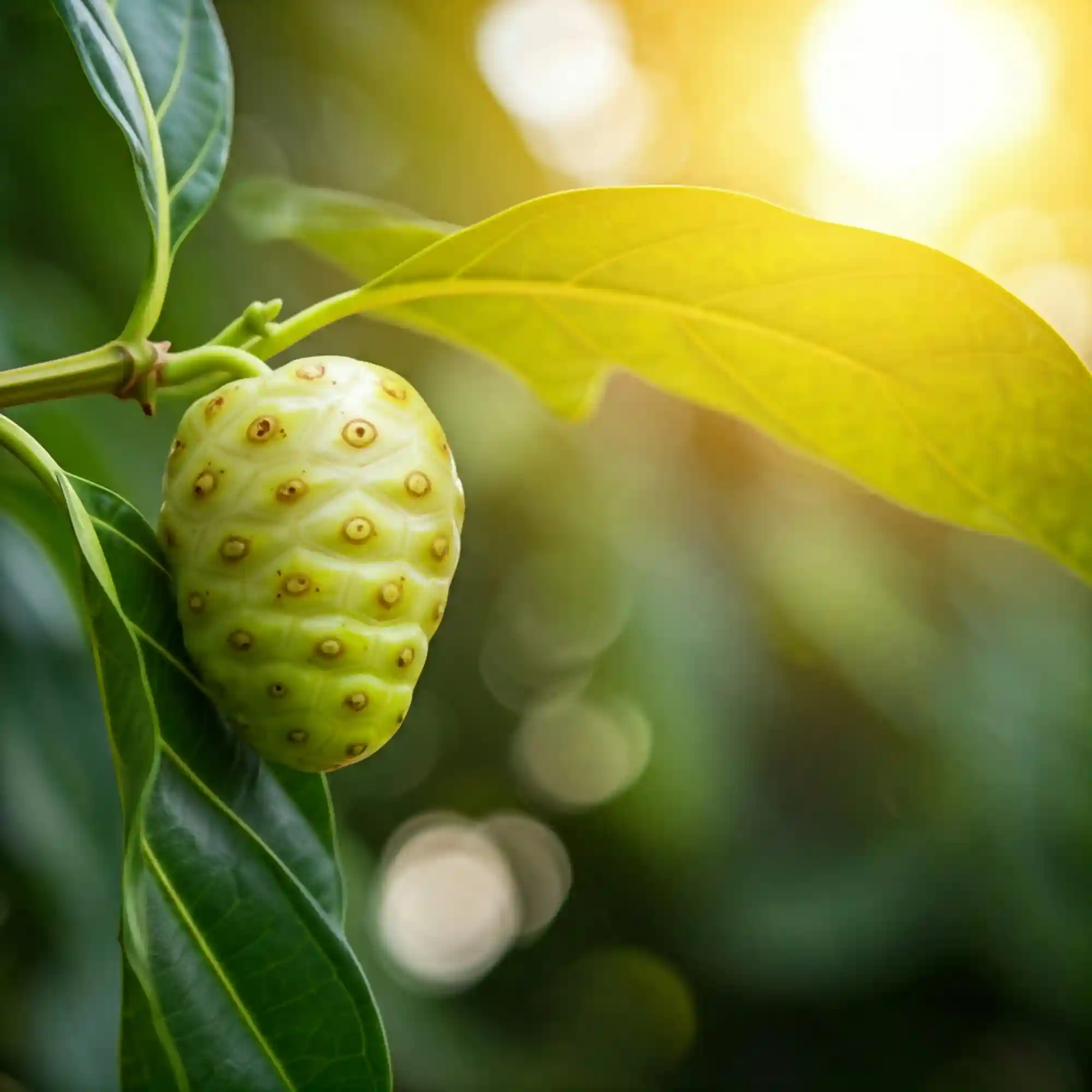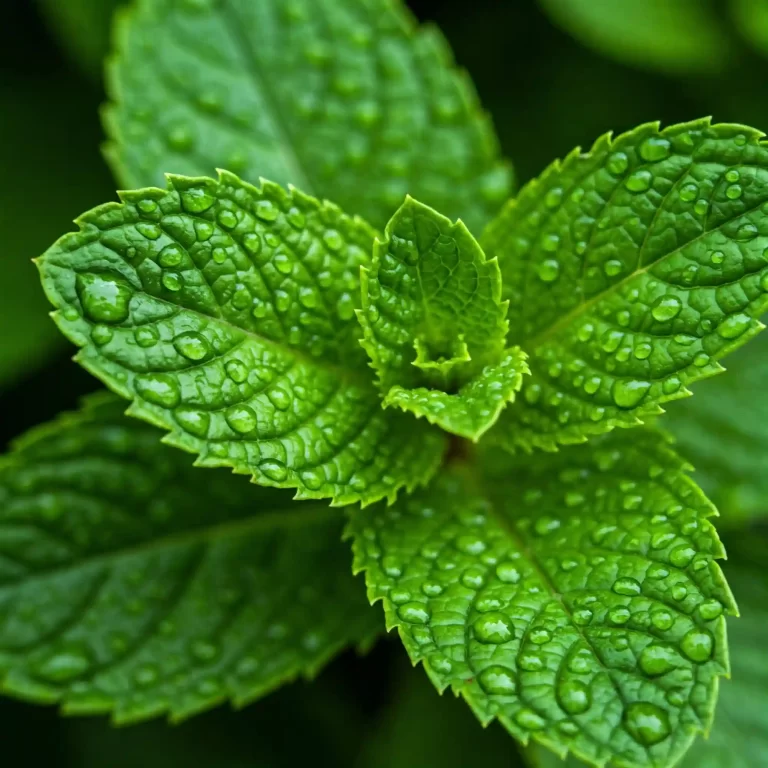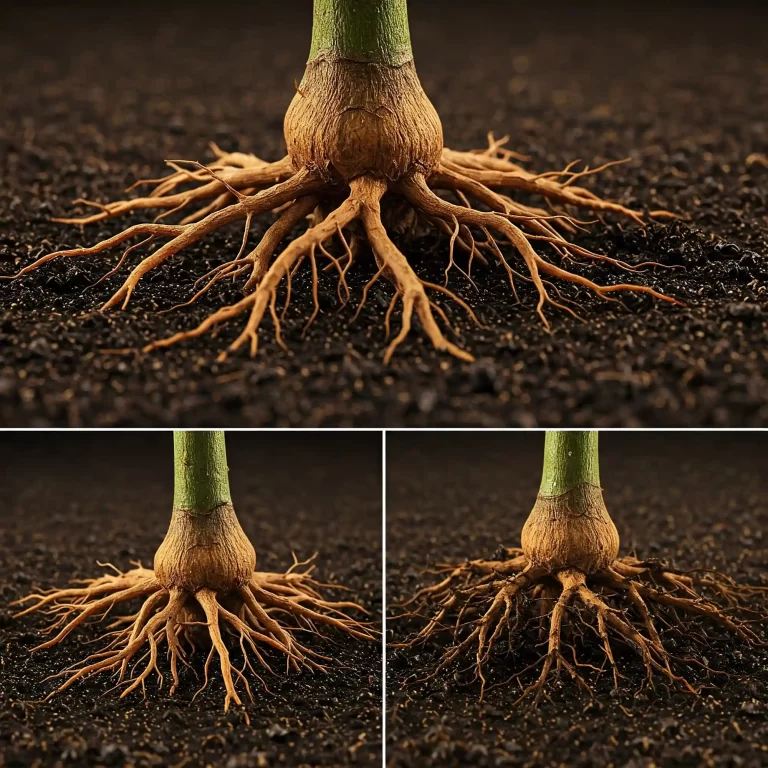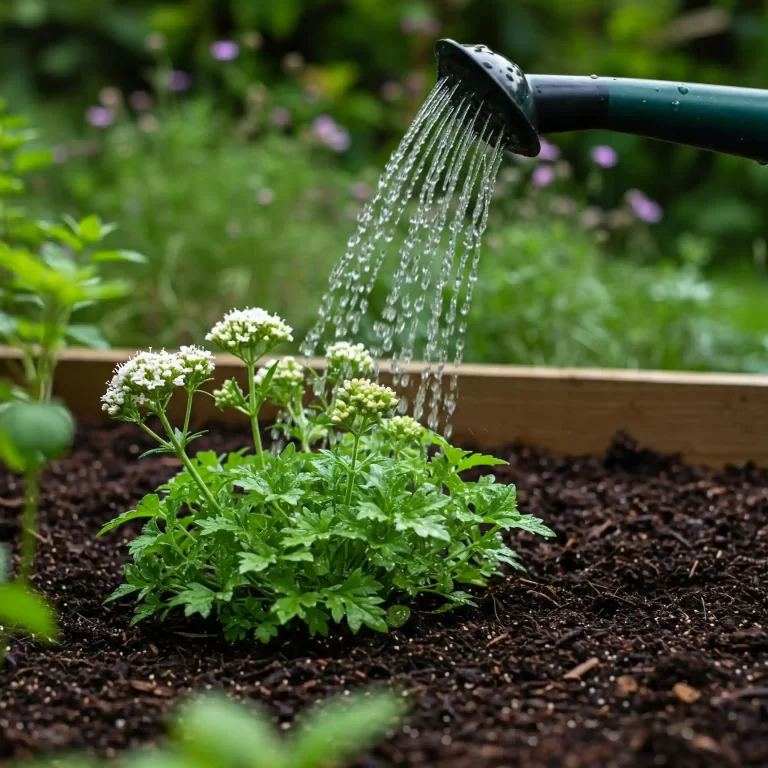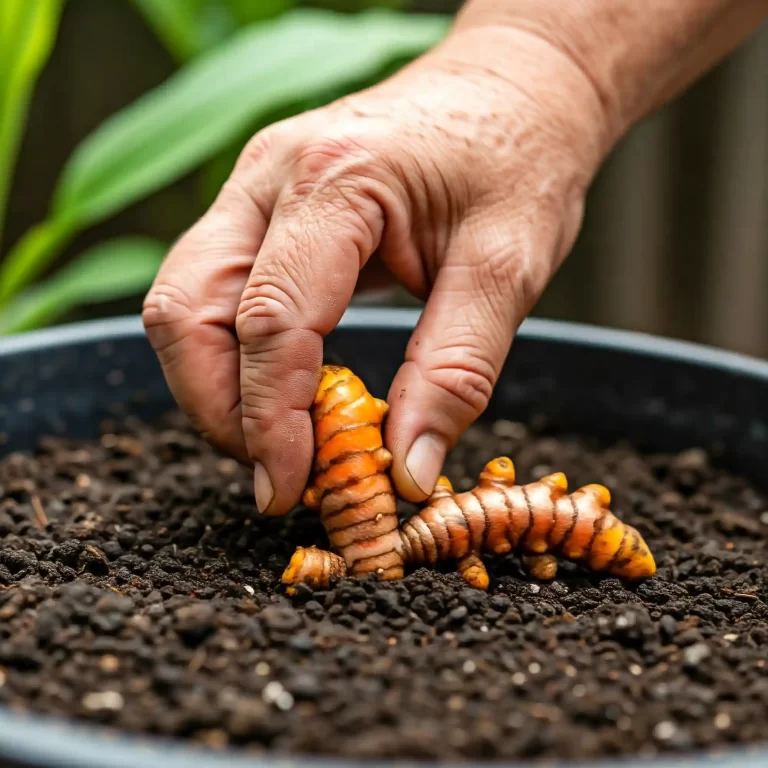Unlocking the Secrets of Noni Cultivation
Are you captivated by the idea of growing your own exotic, potentially health-boosting plants at home? Do you find yourself drawn to the rich history and unique characteristics of plants used in traditional practices? I know I have! Many gardeners I speak with express a desire to cultivate something different, something with a story. They’re tired of the usual tomatoes and peppers and are searching for a plant that offers both beauty and potential benefits. You’re likely here because you’re intrigued by the noni plant (Morinda citrifolia), a fascinating species with a long history of traditional use. You may have heard about its potential health benefits or simply been captivated by its unusual fruit. Whatever your reason, I’m here to guide you through the process of successfully cultivating this remarkable plant.
I remember my first encounter with a noni fruit—its pungent aroma was certainly…memorable! But beyond the initial olfactory experience, I was fascinated by its resilience, its adaptability, and the stories surrounding its use in Polynesian cultures. I’ve since dedicated time to learning about its cultivation, and I’m eager to share my knowledge with you.
This guide is designed to provide you with a complete understanding of how to grow noni herbs, from seed to harvest. We’ll delve into the specifics of noni’s needs, from ideal climate conditions to proper soil composition and pest management. I’ll also share some of the tips and tricks I’ve learned along the way, based on my own experiences and research. Whether you’re a seasoned gardener looking to expand your repertoire or a beginner eager to start your green thumb journey, this guide will equip you with the knowledge you need to successfully cultivate thriving noni plants. Growing noni can be a rewarding experience, offering not only a unique addition to your garden but also a connection to a rich history and a potentially valuable natural resource. Let’s embark on this growing adventure together!
How to Grow Noni Herbs: A Comprehensive Guide
Understanding Noni (Morinda citrifolia)
The noni plant, scientifically known as Morinda citrifolia, is a small evergreen tree belonging to the coffee family (Rubiaceae). While often referred to as a “herb,” it’s technically a tree, typically growing to a height of 10-20 feet. Originating from Southeast Asia and Polynesia, noni has a rich history of traditional use in these regions. The plant is characterized by its large, glossy green leaves, small white flowers, and distinctive, oval-shaped fruit.
The fruit is perhaps the most recognizable part of the noni plant. It starts out green, gradually turning yellow and then almost white as it ripens. The ripe fruit has a pungent odor, which has earned it some less flattering nicknames like “cheese fruit” or “vomiting fruit.” While the smell might be off-putting to some, the fruit is a valuable source of nutrients and has been used traditionally for various purposes.
In traditional Polynesian medicine, noni has been used for centuries to address a variety of health concerns. The fruit, leaves, roots, and bark have all been utilized in different preparations. While modern scientific research is still exploring the full extent of noni’s potential benefits, it’s important to acknowledge its long history of traditional use. It’s this history, coupled with the plant’s adaptability and resilience, that has sparked my interest in its cultivation.
Noni thrives in tropical and subtropical climates, preferring warm temperatures and high humidity. It’s a relatively hardy plant, capable of tolerating a range of soil conditions, but it performs best in well-draining soil rich in organic matter. The plant also prefers full sun but can tolerate partial shade. These characteristics make it a suitable plant for many home gardens, particularly in warmer regions.
While I can’t make any medical claims about noni’s health benefits, I can tell you that many people are drawn to growing it because of its reputation as a “superfood.” The fruit contains various nutrients, including vitamins, minerals, and antioxidants. Whether you’re interested in exploring its potential benefits or simply appreciate its unique characteristics, growing noni can be a fascinating and rewarding experience. As a gardener, I find it incredibly fulfilling to cultivate plants with such a rich history and cultural significance.
Noni’s Botanical Profile:
- Scientific Name: Morinda citrifolia
- Family: Rubiaceae (Coffee Family)
- Type: Small Evergreen Tree (often referred to as an herb)
- Origin: Southeast Asia and Polynesia
- Growth Habit: Typically 10-20 feet tall
- Leaves: Large, glossy green
- Flowers: Small, white
- Fruit: Oval-shaped, green turning yellow to white when ripe, pungent odor.
Traditional Uses:
- Polynesian medicine has used noni for centuries.
- Fruit, leaves, roots, and bark are utilized.
Growing Conditions:
- Tropical and subtropical climates are ideal.
- Warm temperatures and high humidity are preferred.
- Tolerates various soil conditions, but prefers well-draining soil.
- Full sun to partial shade is suitable.
Essential Conditions for Growing Noni Herbs
Noni, as I’ve come to learn, is a resilient plant, but providing the right growing conditions is key to ensuring its optimal health and productivity. Think of it as creating a little slice of the tropics in your own garden. You wouldn’t expect a cactus to thrive in a swamp, and similarly, noni has specific preferences that you’ll want to cater to. Here’s what I’ve found to be most important:
Climate: Embracing the Warmth
Noni is native to tropical and subtropical regions, so it thrives in warm, humid environments. I’ve noticed that it struggles in areas with prolonged cold temperatures or frost. If you live in a region with distinct seasons, you might consider growing noni in a container so you can bring it indoors during the colder months.
- Temperature: Noni prefers temperatures between 65°F and 95°F (18°C and 35°C). It can tolerate slightly cooler temperatures for short periods, but prolonged exposure to temperatures below 50°F (10°C) can be damaging.
- Humidity: High humidity is essential for noni’s well-being. If you live in a dry climate, you can increase humidity by misting the plant regularly, placing a tray of water near the plant, or using a humidifier.
Sunlight: Basking in the Light
Noni loves sunlight! I’ve found that it performs best when it receives at least 6-8 hours of direct sunlight per day. However, it can also tolerate partial shade, especially in extremely hot climates. If you’re growing noni indoors, place it near a sunny window where it can receive ample light.
Soil: A Well-Draining Foundation
The type of soil you use plays a crucial role in noni’s health. I’ve learned that well-draining soil is essential to prevent root rot, a common problem with noni. Here are some key considerations:
- Drainage: Noni doesn’t like to sit in waterlogged soil. Ensure your soil has good drainage by adding perlite, sand, or other drainage materials.
- Soil pH: Noni prefers slightly acidic to neutral soil with a pH between 6.0 and 7.0. You can test your soil’s pH using a home testing kit and amend it if necessary.
- Organic Matter: Incorporating organic matter, such as compost or well-rotted manure, can improve soil fertility and drainage.
Watering: Finding the Right Balance
Watering is another crucial aspect of noni care. I’ve found that it’s important to find the right balance – not too much and not too little.
- Frequency: Water your noni regularly, but allow the soil to dry out slightly between waterings. Overwatering can lead to root rot, while underwatering can cause the plant to wilt.
- Method: Water the base of the plant, avoiding wetting the leaves as this can encourage fungal diseases.
Essential Growing Conditions for Noni:
| Aspect | Requirement |
| Climate | Tropical and subtropical, warm and humid |
| Temperature | 65°F – 95°F (18°C – 35°C) |
| Sunlight | Full sun (6-8 hours) to partial shade |
| Soil | Well-draining, slightly acidic to neutral (pH 6.0-7.0) |
| Watering | Regular, allowing soil to dry slightly between waterings |
By providing these essential conditions, you’ll create a thriving environment for your noni plants. It’s like giving them a little taste of home, which will encourage healthy growth and abundant fruit production. I’ve seen firsthand how much of a difference these factors make, and I encourage you to pay close attention to them as you begin your noni growing journey.
How to Propagate Noni Herbs: From Seed to Cutting
Propagating noni can be a rewarding experience, allowing you to expand your noni patch or share this unique plant with friends and family. I’ve experimented with both seed and cutting propagation, and I’ll share my insights with you.
Growing Noni from Seed: A Patient Approach
Growing noni from seed can be a bit more time-consuming, but it’s a great way to start if you want to experience the full life cycle of the plant. Here’s what I’ve learned:
- Seed Preparation: Noni seeds have a hard outer coating, which can make germination challenging. To improve germination rates, I recommend scarifying the seeds. This involves gently nicking or filing the seed coat to allow water to penetrate more easily. You can also soak the seeds in warm water for 24-48 hours before planting.
- Germination Techniques: I’ve had the best success germinating noni seeds in a moist paper towel or seed starting mix. Place the scarified and soaked seeds in a sealed plastic bag or container to maintain humidity. Keep the seeds in a warm location (around 75-85°F or 24-29°C). Germination can take anywhere from a few weeks to a few months, so be patient.
- Starting Seeds Indoors vs. Outdoors: You can start noni seeds either indoors or outdoors, depending on your climate. If you live in a colder region, starting seeds indoors is recommended to give them a head start. Once the seedlings are large enough, you can transplant them outdoors after the last frost.
- Transplanting Seedlings: Once your seedlings have developed a few sets of true leaves, they’re ready to be transplanted into individual pots or directly into the ground. Choose a well-draining potting mix or amend your garden soil with compost and other organic matter.
Propagating Noni from Cuttings: A Faster Method
Propagating noni from cuttings is a faster way to get new plants, as you’re essentially cloning the parent plant. Here’s my approach:
- Selecting Healthy Cuttings: Choose healthy, disease-free stems from a mature noni plant. The cuttings should be about 6-8 inches long and have several leaves.
- Rooting Methods: I’ve had success rooting noni cuttings in water or directly in a rooting medium like perlite or vermiculite. If rooting in water, change the water regularly to prevent bacterial growth. If rooting in a medium, keep it consistently moist but not waterlogged.
- Rooting Hormone: Using a rooting hormone can significantly improve rooting success. Dip the cut end of the cutting in rooting hormone powder or liquid before placing it in water or the rooting medium.
- Planting Rooted Cuttings: Once the cuttings have developed a good root system, they can be planted in pots or directly into the ground.
Tips for Successful Propagation:
- Maintain Warmth and Humidity: Noni cuttings and seedlings thrive in warm, humid conditions.
- Provide Adequate Light: Once seedlings emerge or cuttings have rooted, provide them with plenty of light.
- Avoid Overwatering: Overwatering can lead to root rot, which can be fatal to young plants.
- Be Patient: Noni can be slow to propagate, so be patient and don’t give up.
Propagating noni can be a rewarding experience, allowing you to expand your noni patch or share this unique plant with friends and family. With a little patience and care, you can successfully propagate noni from either seed or cuttings.
Planting and Caring for Your Noni Herbs
Once you have your noni seedlings or rooted cuttings, it’s time to plant them and provide the care they need to thrive. I’ve found that paying attention to a few key factors can make all the difference in their growth and fruit production.
Choosing the Right Location: Finding the Perfect Spot
Noni plants need a location that provides adequate sunlight, space, and drainage. Here are some things to consider:
- Sunlight: As I mentioned earlier, noni prefers full sun, meaning at least 6-8 hours of direct sunlight per day. However, it can also tolerate partial shade, especially in hotter climates.
- Space: Noni can grow into a small tree, so make sure you have enough space for it to reach its mature size. Consider the plant’s mature height and spread when choosing a location.
- Drainage: Well-draining soil is crucial for noni. Avoid areas where water tends to pool or where the soil stays consistently wet.
Planting in the Ground: Giving Them Room to Grow
If you’re planting your noni directly in the ground, here are some steps to follow:
- Soil Preparation: Amend the soil with compost and other organic matter to improve drainage and fertility.
- Spacing: Space your noni plants at least 10-15 feet apart to allow for adequate growth.
- Planting Depth: Dig a hole that is slightly larger than the root ball of your plant. Place the plant in the hole and backfill with soil, making sure the top of the root ball is level with the ground.
Growing Noni in Containers: A Portable Option
Growing noni in containers is a great option if you have limited space or live in a colder climate. Here are some tips:
- Choosing the Right Pot: Select a pot that is large enough to accommodate the plant’s root system. Make sure the pot has drainage holes to prevent waterlogging.
- Potting Mix: Use a well-draining potting mix that is rich in organic matter.
- Repotting: As your noni plant grows, you’ll need to repot it into a larger container.
Watering and Fertilizing: Providing Essential Nutrients
Proper watering and fertilization are essential for noni’s health and fruit production. Here’s what I recommend:
- Watering: Water your noni regularly, but allow the soil to dry out slightly between waterings. Avoid overwatering, as this can lead to root rot.
- Fertilizing: Fertilize your noni plant regularly with a balanced fertilizer. You can also use organic fertilizers like compost tea or fish emulsion.
Pruning and Maintenance: Keeping Things Tidy
Regular pruning can help maintain the shape of your noni plant and encourage fruit production. Here are some tips:
- Removing Dead or Damaged Branches: Prune away any dead, damaged, or diseased branches.
- Shaping the Plant: You can prune your noni plant to maintain a desired shape or size.
By following these planting and care tips, you’ll be well on your way to growing healthy, productive noni plants.
Protecting Noni Herbs from Pests and Diseases
While noni is a relatively hardy plant, it can be susceptible to certain pests and diseases. I’ve learned that vigilance and early intervention are key to keeping your noni plants healthy. Here’s what I’ve observed:
Common Pests: Identifying the Intruders
- Aphids: These small, soft-bodied insects can cluster on new growth, sucking sap from the plant. I’ve found that they can cause distorted leaves and reduce plant vigor.
- Mealybugs: These white, cottony insects also suck sap and can be found on leaves, stems, and fruit. They can secrete honeydew, which can attract sooty mold.
- Scale Insects: These small, armored insects attach themselves to leaves and stems, sucking sap. They can be difficult to control once established.
Common Diseases: Recognizing the Signs
- Fungal Diseases: Noni can be susceptible to various fungal diseases, especially in humid conditions. I’ve seen signs like leaf spots, fruit rot, and root rot.
- Root Rot: This is a serious condition that can occur in waterlogged soil. It can cause the plant’s roots to decay, leading to wilting and death.
Organic Pest and Disease Control Methods: Natural Solutions
I prefer to use organic methods to control pests and diseases in my noni plants. Here are some effective options I’ve used:
- Neem Oil: This natural oil can be effective against a variety of pests, including aphids, mealybugs, and scale insects. I mix it with water and spray it on the affected plants.
- Insecticidal Soap: This is another effective option for controlling soft-bodied insects like aphids and mealybugs.
- Copper Fungicide: This can be used to control certain fungal diseases.
- Good Cultural Practices: Maintaining good cultural practices, such as proper watering, good air circulation, and removing infected plant parts, can help prevent many pest and disease problems.
Tips for Preventing Pest and Disease Problems:
- Inspect Plants Regularly: Regularly inspect your noni plants for signs of pests or diseases.
- Provide Good Air Circulation: Ensure good air circulation around your plants to help prevent fungal diseases.
- Avoid Overwatering: Overwatering can create conditions that favor root rot.
- Remove Infected Plant Parts: Promptly remove any infected plant parts to prevent the spread of disease.
By being vigilant and using appropriate control methods, you can keep your noni plants healthy and productive.
Harvesting Noni Fruit and Leaves
The noni plant is a fast-growing tree that can produce fruit year-round in warm climates. The fruit is typically harvested when it is green or yellow-green in color. The leaves can be harvested at any time.
When harvesting noni fruit, it is important to wear gloves to avoid staining your hands. The fruit can be eaten fresh, or it can be processed into juice, puree, or powder. Noni leaves can be eaten fresh or cooked. They can also be used to make tea.
Here are some tips for harvesting noni fruit and leaves:
- Harvest the fruit when it is green or yellow-green in color.
- Wear gloves to avoid staining your hands.
- Use a sharp knife or scissors to remove the fruit from the tree.
- Harvest the leaves at any time.
- Use a sharp knife or scissors to remove the leaves from the tree.
Here are some tips for using noni fruit and leaves:
- Eat the fruit fresh, or process it into juice, puree, or powder.
- Eat the leaves fresh or cooked.
- Use the leaves to make tea.
Here are some of the benefits of using noni fruit and leaves:
- Noni fruit is a good source of vitamins, minerals, and antioxidants.
- Noni leaves are a good source of vitamins, minerals, and antioxidants.
- Noni fruit and leaves may help boost the immune system, reduce inflammation, and protect against chronic diseases.
If you are interested in learning more about the benefits of noni fruit and leaves, please consult with a healthcare professional.
How to Grow Noni Herbs Indoors: A Guide for Urban Gardeners
Growing noni indoors can be a rewarding experience, especially for those living in urban environments or areas with colder climates. Here are some tips to help you successfully cultivate noni herbs indoors:
Choosing the Right Pot and Potting Mix for Indoor Noni
Select a pot that is large enough to accommodate the plant’s root system. Ensure the pot has drainage holes to prevent waterlogging, which can lead to root rot.
Use a well-draining potting mix that is rich in organic matter. A mixture of peat moss, perlite, and vermiculite is a good option.
Providing Adequate Light Indoors for Noni Growth
Noni plants need at least 6-8 hours of direct sunlight per day. Place your noni plant near a sunny window where it can receive ample light.
If you don’t have a sunny window, you can supplement with artificial grow lights.
Maintaining Humidity Levels for Indoor Noni Plants
Noni plants prefer high humidity levels. You can increase humidity by misting the plant regularly, placing a tray of water near the plant, or using a humidifier.
Additional Tips for Growing Noni Indoors:
- Water your noni plant regularly, but allow the soil to dry out slightly between waterings.
- Fertilize your noni plant regularly with a balanced fertilizer.
- Prune your noni plant as needed to maintain its shape and size.
- Repot your noni plant into a larger container as it grows.
- Monitor your noni plant for pests and diseases.
With proper care, you can successfully grow noni herbs indoors and enjoy their unique flavor and potential health benefits.
FAQ: Addressing Your Noni Growing Questions
Growing noni can be a rewarding experience, but it’s natural to have questions along the way. Here are some frequently asked questions about growing noni herbs:
How to grow noni herbs from seeds in pots?
To grow noni from seeds in pots, start by scarifying the seeds and soaking them in warm water for 24-48 hours. Then, plant the seeds in a well-draining potting mix and keep them moist. Once the seedlings emerge, provide them with plenty of light.
What is the best soil for growing noni herbs organically?
Noni plants prefer a well-draining soil that is rich in organic matter. A mixture of peat moss, perlite, and vermiculite is a good option.
How to protect noni herbs from common pests and diseases naturally?
To protect noni from pests and diseases naturally, you can use neem oil, insecticidal soap, or copper fungicide. You can also maintain good cultural practices, such as proper watering, good air circulation, and removing infected plant parts.
Step-by-step guide on how to grow noni herbs indoors?
To grow noni indoors, select a pot that is large enough to accommodate the plant’s root system. Use a well-draining potting mix and place the plant near a sunny window. Water the plant regularly, but allow the soil to dry out slightly between waterings. Fertilize the plant regularly with a balanced fertilizer.
How to grow noni herbs in tropical climates with high humidity?
Noni plants thrive in tropical climates with high humidity. If you live in a tropical climate, you can plant your noni plant directly in the ground. However, you will need to take extra care to water the plant during dry periods.
How to harvest and use noni herbs for medicinal purposes at home?
Noni fruit can be harvested when it is green or yellow-green in color. The leaves can be harvested at any time. To use noni for medicinal purposes, you can eat the fruit fresh, or you can process it into juice, puree, or powder. You can also eat the leaves fresh or cooked.
Easy tips and tricks on how to grow healthy noni herbs quickly?
To grow healthy noni quickly, provide it with plenty of sunlight, water, and fertilizer. You can also prune the plant to encourage new growth.
How to propagate noni herbs from cuttings for beginners?
To propagate noni from cuttings, take a 6-8 inch cutting from a healthy noni plant. Remove the leaves from the bottom half of the cutting and dip the cut end in rooting hormone. Then, plant the cutting in a well-draining potting mix. Keep the soil moist and the cutting in a warm location.
Complete guide on how to grow noni herbs for beginners in containers?
Growing noni in containers is a great option for beginners. Choose a pot that is large enough to accommodate the plant’s root system. Use a well-draining potting mix and place the plant near a sunny window. Water the plant regularly, but allow the soil to dry out slightly between waterings. Fertilize the plant regularly with a balanced fertilizer.
How to fertilize noni herbs naturally for optimal fruit production?
To fertilize noni naturally, you can use compost tea or fish emulsion. You can also add compost to the soil around the plant.
I hope this FAQ section has answered your questions about growing noni. If you have any further questions, please feel free to leave a comment below.
Conclusion: Embracing the Journey of Noni Cultivation
Growing noni is an investment in yourself and your well-being. It’s a journey that allows you to connect with nature, learn about a fascinating plant, and potentially enjoy its unique benefits. While it may require some patience and attention, the rewards are well worth the effort.
As you embark on your noni-growing adventure, remember these key takeaways:
- Noni thrives in warm, humid conditions: If you live in a colder climate, consider growing it indoors or in a greenhouse.
- Well-draining soil is essential: Noni doesn’t like to sit in waterlogged soil, so make sure your soil has good drainage.
- Regular watering and fertilization are important: Water your noni regularly, but allow the soil to dry out slightly between waterings. Fertilize your noni plant regularly with a balanced fertilizer.
- Protect your noni from pests and diseases: Regularly inspect your plants for signs of pests or diseases and take appropriate action.
- Harvest noni fruit and leaves when they are ripe: Noni fruit is typically harvested when it is green or yellow-green in color. The leaves can be harvested at any time.
With proper care and attention, you can successfully grow noni herbs and enjoy their unique flavor and potential health benefits.
Additional Resources:
I encourage you to explore these resources to learn more about growing noni and its potential benefits.
Happy gardening!
